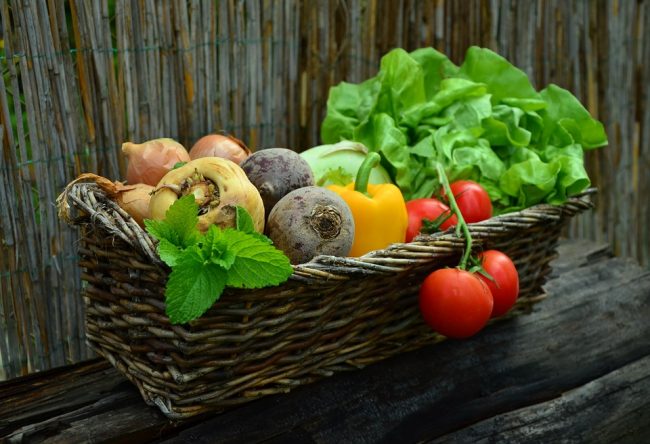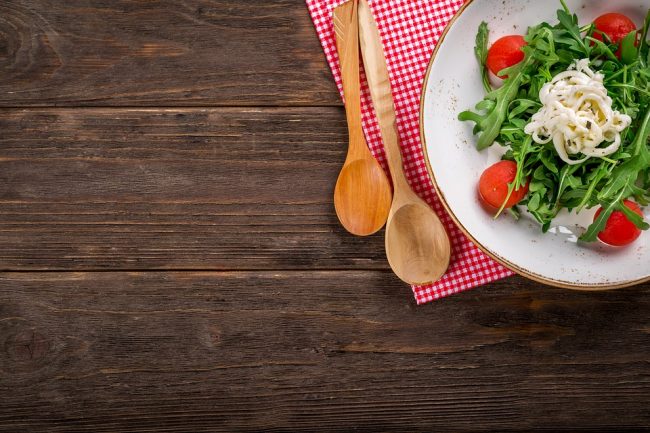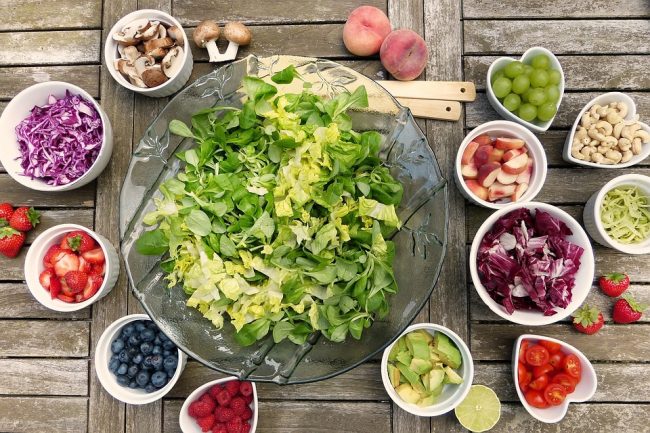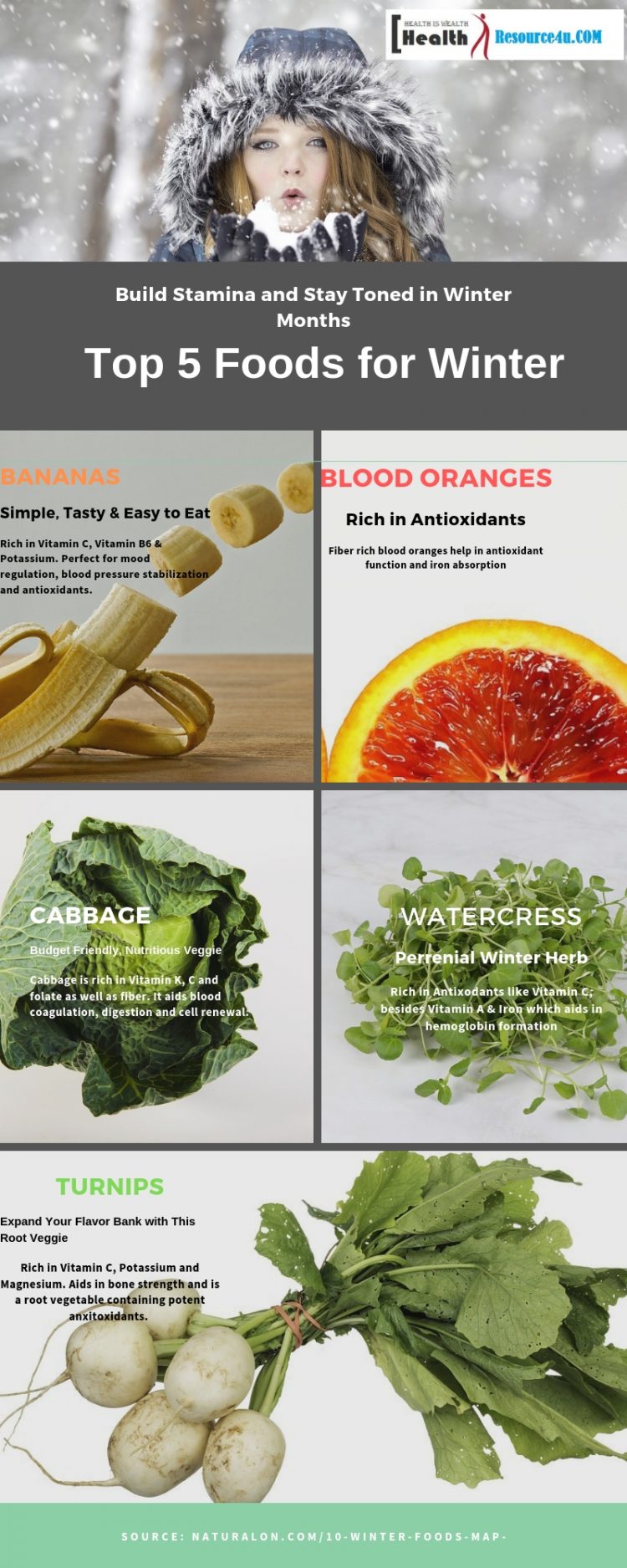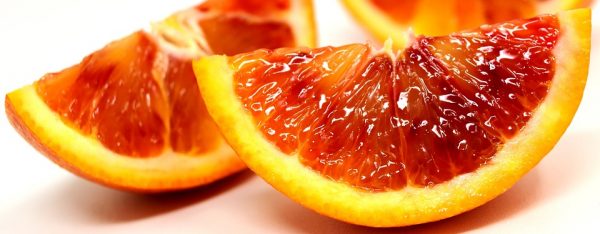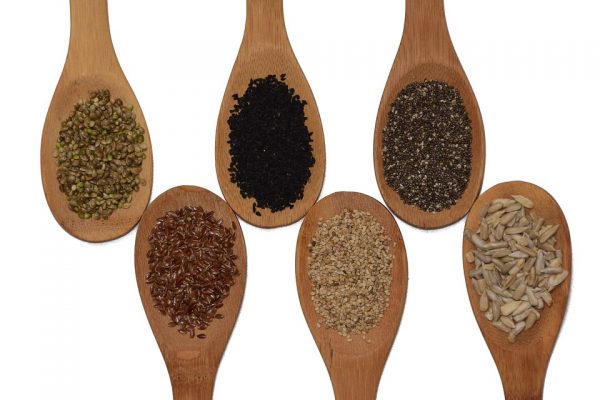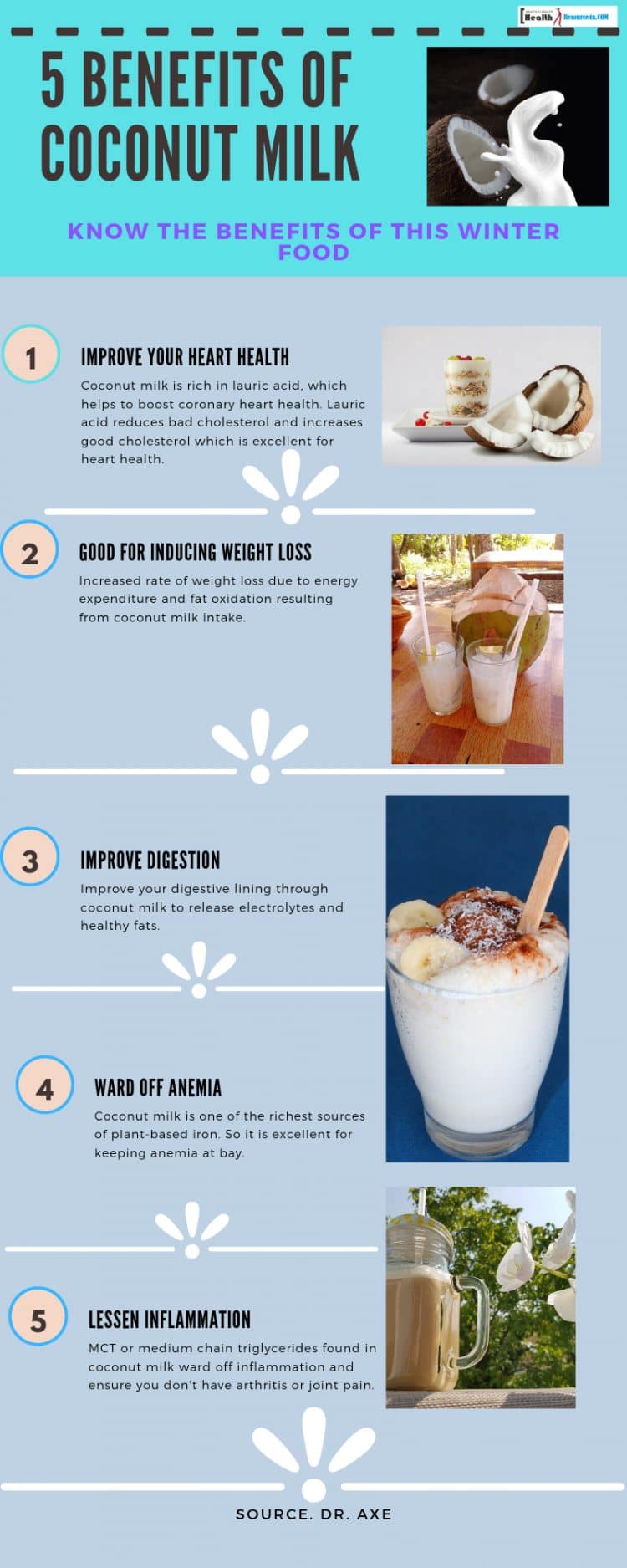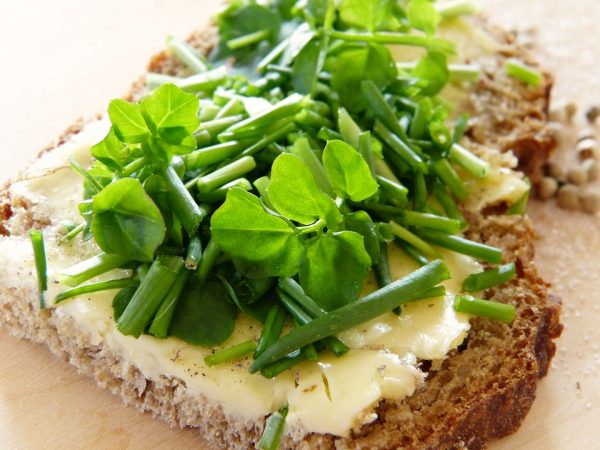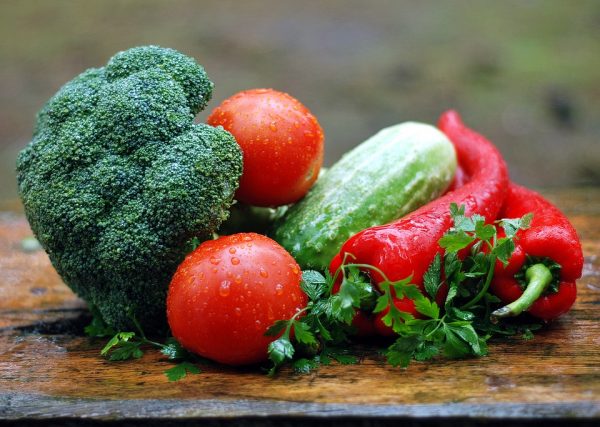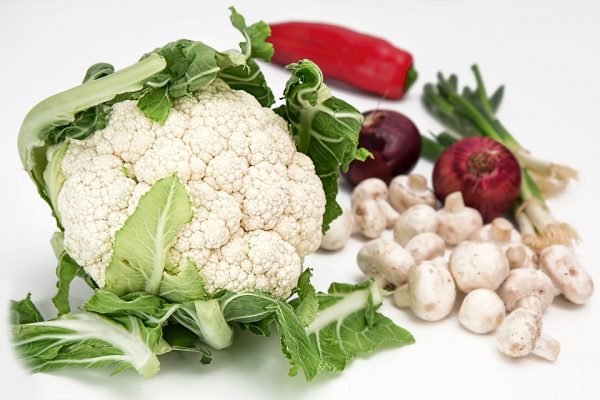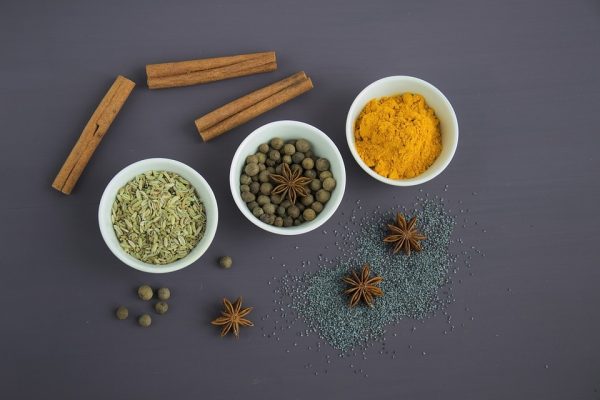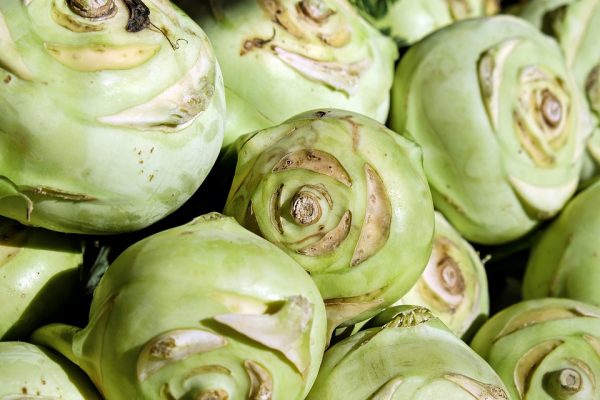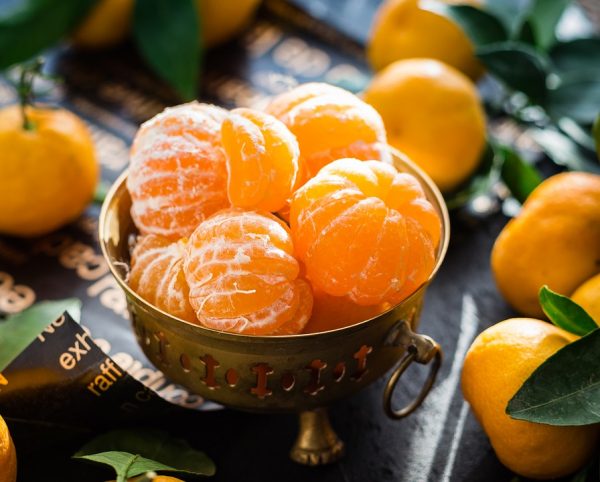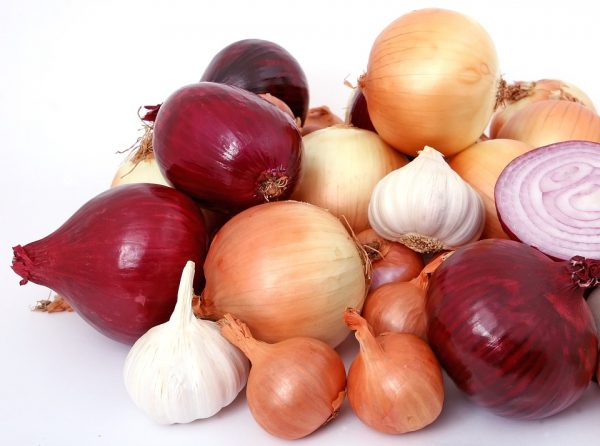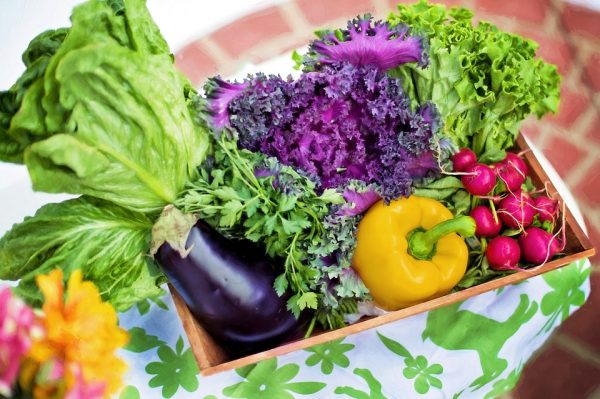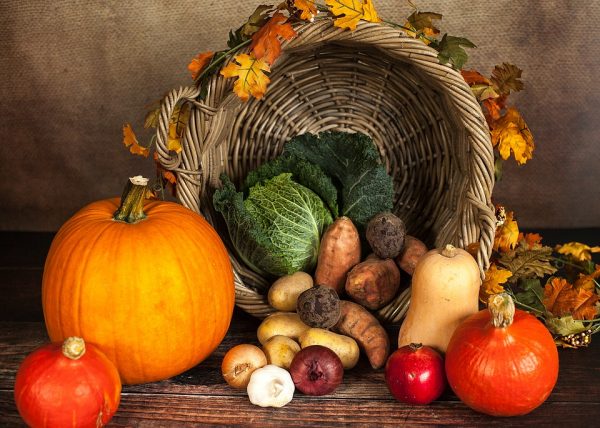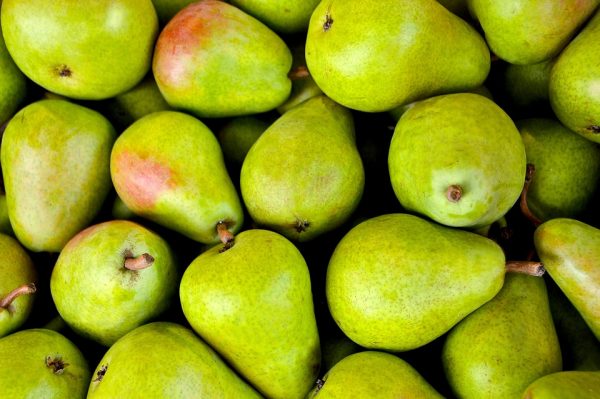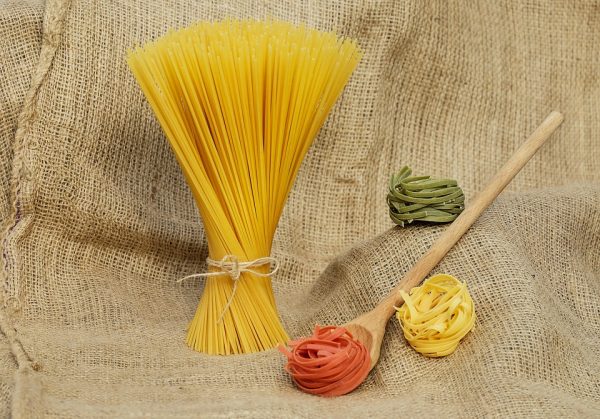The climate outside may be terrible, as freezing temperatures and chilly winds in winter set in, but this does not mean your diet has to be. Nourish your body with serious nutritional support. Have foods for boosting your immunity along with your mood. Eat sensibly to avoid piling on additional calories. Try healthy food substitutes instead.
As temperatures dip, it becomes increasingly challenging to follow a healthy and nutritious diet. On a cold & chilly day, it is extremely tempting to spend time on a couch with some salty, canned soup or even a whole set of post-Xmas holiday treats. For this reason, it is important for you to start on healthy eating in colder months. Ensuring the body remains well nourished during winter is difficult, but it remains crucial to avert weight gain, besides fending off pesky germs and viral bouts.
Overcoming The Obstacles
Table of Contents
Eating a healthy diet through the winter months is challenging because of a lot of factors. The most obvious ones? Your holidays! Rich food is traditionally a predominant aspect of winter celebrations. Consuming some cookies or candy pieces can be a problem. Opt for unhealthy options and your health will suffer.
A problem with the holiday eating binge is that it triggers weight gain, besides denting the immune system. From Halloween to the New Year, refined sugar, processed foods, and plenty of alcohol consumption can do their damage. In fact, this places undue stress on your adrenal glands and immune system
A real problem in working on healthy eating in winter months is a lack of adequate sunlight. As it darkens, there is lower exposure to the sun, which leads to dips in the neurotransmitter serotonin associated with positive moods. That fall in serotonin levels exacerbates depression and triggers food cravings.
Focusing on spending some time outdoors in the sunshine is not enough. Individuals need to tank up on vitamin D, Eating foods rich in vitamins reduce the chance of various types of cancers by 50%.
Individuals can also receive serotonin through healthy carbs. Whole grains or high-quality carbs like sweet potatoes, pumpkins, yams, and squash boost the serotonin levels.
For those experiencing the winter blues, dietary alterations could be the way to better mental health.
Healthy eating is, however, rare during the wintertime. The focus is on making something easy and quick following a hard day at work. Getting yourself healthy meals takes time and effort, especially in busy winter months. It remains simpler to eat a microwave dinner. Additionally, fresh produce is not easy to procure and can be costly during the winter season.
To ensure healthy eating becomes easier, information is your best ally. For example, in case fresh produce rates shoot up the frozen foods section could be the solution. What many people don’t know is that frozen veggies are way more nutritious than the canned varieties lead to low nutritional value because of preservation processes. Such foods also come loaded with salt.
Additionally, there are plenty of fruits or veggies in stores such as pomegranates, grapes, cranberries, lemons and other citrus fruits and different types of root vegetables. These add a dose of vitamins plus nutrients to the winter plate besides being fresh all through the winter season.
Eating to Boost the Immunity
While nothing comes in the way of common cold once it develops, strong immune systems help ward off germs that trigger viral bouts, colds as well as the flu. Healthy immune systems can even lessen the duration of your cold. Away to boost immunity maintaining a diet high in vitamin C. Research has shown that close to 1,000 mg of vitamin-C supplements can turn cold milder shortening them by half a day.
During winter-time, people should also load up on fruits or vegetables brimming with powerful nutrients. Foods high in the antioxidant levels of vitamin C plus beta-carotene include the power to stave off germs. Eating citrus fruits, broccoli, cabbage, pumpkin, spinach, and sweet potato makes it easy to boost immunity. Increase your zinc intake by loading up on foods like fish, chicken, oysters, eggs, unprocessed grains, milk, and cereals.
Along with this, diets should also have a healthy good bacteria level. Assimilating enough probiotics or gut-friendly flora helps in restoring healthy bacteria levels in your body to eliminate infections. This includes fermented dairy products like kefir, yogurt, and sauerkraut. These foods not only contain live cultures but are also rich in good fats. Probiotic serve as dietary supplements, more so during winter months postantibiotic use.
Sipping tea during the winter can also to help fend off germs Consuming adequate green tea like polyphenols in the form of catechins stimulates the production or activity of certain cells linked to combating and eliminating viruses.
People also need to keep track of how much is eaten and drunk, not only what is consumed. Overeating turns out to be a greater problem during winter months. as this impacts immunity. Healthy and wholesome eating plus nutritious energy intake impacts the immunity function and system. Studies found extremely low-calorie or high-calorie diets impact the immune function in an adverse way. Additionally, extremely high-fat diets adversely impact the immune function rates of illness and infection.
Moderate fat intake is desirable, especially around 30% of your complete energy needs every day. Adding healthy or good fats like monounsaturated or polyunsaturated to your diet during the winters can benefit you. It also helps to incorporate everyday multivitamin & mineral supplement consumes nutritious items belonging to all the food groups for boosting immunity and health.
Further, there is no known quick remedy for a cold or viral about the best defense to safeguard your health against these is a healthy and strong immune functioning. Following simple nutrition methods and steps offer your body the optimal chance of fending off common or known winter bugs and flu germs, besides protecting your health.
Highlight Winter Diet Issues
Overeating during holiday seasons is a common malady. One thing you need to do is ask yourself as to whether you’re hungry or thirsty or just bored due to the monotony and dullness of winter. The focus should be on avoiding skipped meals and eating regularly.
Another great way to stave off winter hunger pangs is to fill up on the vegetable or even broth-based soups before resorting to the main meal. Eating less quickly thanks to a hot soup can help you to slow down and ingest fewer calories.
To avoid holiday pitfalls at parties offering plenty of rich food, another good idea is to contribute only a single dish or two. Helping in preparing nutritious food treats means more work, but it is well worth the investment if you avoid the cookies, cakes, and pies. Bring healthy dishes to parties or get-together. That way, one knows beforehand that there is least a specific healthy item that can be chosen.
A healthy substitute may work out better for your health. For example, on cold and dreary days, the focus should be on trying a sugar-free, low-or-no-fat beverage. Avoid calorie-dense options sold at local coffee shops. One can also advise their clients to choose better quality or natural sweeteners.
This includes an array of options like agave nectar, stevia, maple syrup, or limited honey. If you have a craving for sugar, opt for sweet potato or mashed yams, instead of white potato.
Rather than canned soup, healthy, homemade soups are way better. Go for hearty bowls of lentil, split pea and even black bean soup on cold days. These winter staples are extremely nutritious. You can add pinto beans to vegetable soups or toss half a cup of cannellini, edamame, and garbanzo on a salad.
Get some healthy recipes that are quick, simple easy to make and can be prepared in advance. That was a healthy meal awaits you in the fridge
Following a healthy winter diet means limiting your intake of rich, fatty foods. With plenty of holiday temptations, winter becomes a calorie fest, instead. In the modern marketplace, where foods often are affordable yet higher in fat or carb content, so bad eating habits can spiral out of control.
Vegetable in Variety is the Spice of Life
Raw fruits or veggies are traditionally no part of holiday dinners. A desire for fruits and vegetables diminishes, apart from those typically at the holiday season with rich condiments. When winter begins its march, seasonal starches like potatoes, squashes, apples, beans, onions, and carrots are easily available. A plant-based diet must be diverse in order to be healthy. Maintaining family health winter long is easier with a colorful plate of fruits and vegetables to help you out.
Rules for a Healthy Winter Diet
#1 Eat a Minimum of One Meal Sized Salad Per Week
When the snowfalls, regular salads must be prepared. It’s an excellent way to get enough fresh fruit and vegetables. For this reason, one meal-sized salad per day is crucial. Try a green lentil or black bean soup today.
# 2 Make a Large Veggie-Rich Soup Every Week
Making a large bowl of vegetable soup across the weekend saves time and issues during the weekdays. Use slow-cookers to keep the soup warm and primed for eating whenever you need it. This ensures you can enjoy a meal throughout the entire week. Try veggie-sandwiches to make your meal interesting.
#3 Opt for Wholegrains and Assorted Vegetable Stir-Fry Bowls
Come winter, one of the most innovative dishes to try is a stir-fry. It is simple and so versatile. What more do you need? Some delicious combinations include Kale and Roasted Corn, Asparagus and Carrot or Spicy Mushroom stir-fries.
#4 Eat Nutritious Fruit Salad Once a Week
Looking for great Sunday morning brunch ideas or dinner dessert? Then a fruit salad that’s tasty, nutritious and naturally sweet is undoubtedly the perfect choice.
#5 Make a Veggie Dip To Accompany Your Food
While raw vegetables may not seem appealing right now dip is something no one can resist. Adding a tasty, healthy plus seasonal dip to your table plate raises chances of eating sliced cucumbers, carrot sticks, broccoli crowns, sliced mushrooms, celery sticks, and celery when temperatures are dropping outside. Toss in hemp hearts or even ground flax for boosting the nutrient content of the dip.
#6 Commit to a Single Serving of Raw Veggies or Fruits or Vegetables Once a Day
Simply keep the home, or office lunchbox stocked with favorite snack-time raw fruits or delicious vegetables. The best options? Try carrots, apples, carrots, pears, peaches and celery and pears. You can even opt for raw fruits and veggies to make complete meals.
#7 Eat Green and Leafy Veggies Every Day
From a lettuce sandwich or wrap to parsley garnish, salsa or basil in pasta sauce, eating fresh greens means a lot for those seeking to stay healthy during winter. Greens offer health benefits such as the high amount of antioxidants, prevention of illness and disease and improving cognitive functioning.
#8 Have 4 Different Kinds of Veggies Each & Every Day
Anyone consuming a balanced plant-linked diet can overcome these hurdles in avoiding rich foods in winter. Consume mixed vegetable juices to start with. Try lettuce and tomato sandwiches for lunch besides cooked potatoes and raw onions during dinner. Variety is the key to successfully balancing your winter diet.
#9 Add Fresh Lemon/Lime Juice to a minimum of 2 Glasses of Water Every Day
Forget pre-processed concentrates or artificially flavored beverages. Instead, opt for natural lime water. Add fresh lemons and limes into your water. This ranges across calcium, vitamin Cand potassium. One can use lemons and limes for making healthy breakfast staple bars and items.
#10 Eat at Least a Single Balanced Meal Every Day
Not all individuals like to cook., But meeting the commitment to ensure your diet contains health-boosting fruits and veggies is easier when there’s full control over the meals. Use vegan recipes to get started on a healthy winter diet.
To boost your immunity, winter remains the best season of all. At this time, people are hungrier. More than that, the body engine functions well in the winter. These foods are more easily digested. This provides further nourishment to your body.
So how do you boost immunity during winter months? Immunity-boosting foods that are fresh, easy to digest, organic, pure or wholesome are your best bet. These range across fresh veggies and fruits or even dry fruits, milk or dairy products, different nuts/oilseeds, range of whole grains/legumes and clarified butter.
Many spices also display anti-microbial properties protecting individuals from colds or infections. They serve to stimulate digestive enzymes and boost cellular metabolic functions, besides complete nutrient assimilation.
Foods For Warming The Body in Winter
During winter, the human body craves rich food that provides warmth and nourishment to the body. So warming foods are essential. Any veggie that grows over a long period of time whereby its edible part grows underground is especially warming while a good vegetable to consume during winter. Certain types of dry fruits (dates), oilseeds, nuts also exert a warming effect. It is that time in the year when you eat more spices
All protein-rich, non-vegetarian foods come under the warming category. This includes lean dairy, fish, meat, plus poultry. Wholegrain cereal, protein-rich foods, besides healthy fats provide additional energy to stay warm. Among warning, winter vegetables good for your body include root vegetables such as potato, carrot, onions, radish, garlic, beets, sweet potatoes, yams, turnips, etc., apart from winter greens such as spinach, fenugreek, radish, mint, etc.
Top 49 Foods to Eat in Winter
#1 Meyer Lemons
This is a hybrid between an orange and a lemon, the fruit revs up the metabolic rate! The Connecticut’s University of Bridgeport carried out research which found this fruit contains the d-limonene which helps improve the liver’s ability to catalyze metabolism-limiting toxins by close to 30 percent.
#2 Tangelos
This blend of grapefruit-tangerines constitutes 60 calories and around3-grams of fiber filling the belly, plus massive doses of folate, vitamin C, and potassium to offer you enough energy for winter workouts.
#3 Blood Oranges
Italian researchers found that antioxidants orange contained known as anthocyanins giving these fruits a bright hue also aids in weight loss. As per the animal studies, blood-orange juice doses daily meant the loss of close to 13 percent of their body weight in close to three months without any changes. But do not just drink juice; opt for fiber-rich fruits too if you want to trigger weight loss.
#4 Polenta
This cream corn-centered dish is known for low-fat complex carbs (such as corn) that are high in fiber. Corn is an awesome source of many vitamins, such as folic acid, vitamin C and niacin. It is an insoluble fiber that helps in satiating you lowering cholesterol or weight.
#5 Guava
Guava is a tropical delight that dispels the winter blues.
This sweet, tropical fruit has a rich taste, besides vitamins A and C, magnesium and potassium. Certain varieties have really high levels of the antioxidant lycopene, which can ward off coronary heart disease.
Use guavas rather than tomatoes for your homemade salsa and give your winter meals a nutritious boost.
#6 Pomelo
Pomelos is related to the grapefruit, and it packs a lot of flavanones. The latter is an antioxidant class known for preventing metastasis or the spread of cancer cells. It also has potassium besides being rich in folic acid and replacing grapefruit, orange, and even pineapple in different recipes.”
#7 Sunflower Seeds
These are portable seeds which make for an awesome and healthy snack. A handful of these seeds suppress the appetite and enriches the body with a lot of magnesium, vitamin E, and selenium. Vitamin E is a basic fat-soluble antioxidant which undoes oxidative damage. How does it do this? This vitamin travels across the body, making free radicals inactive. This averts damage to fat-rich structures or molecules like cell membranes, cholesterol, and brain cells.
#8 Honey
Honey is a natural sweetener! It contains natural sugars which rev up the body, prevent fatigue besides raising the energy level. Further, the antioxidants in it bolster the immunity system. It comes with potent antimicrobial properties for helping to kill bacteria besides soothing sore throats in winter. It’s also the perfect cure for a hangover due to natural sugars, alcohol oxidation is speeded up within the liver.”
#9 Eggs
These protein-rich poultry products are an excellent source of essential amino acids besides providing selenium, vitamin B12, iodine, and tryptophan for nourishing your body.”Providing the human body with optimal level nutrients is ideal for maintaining a healthy weight through blood sugar stabilization.
#10 Macadamia Nuts
Out of various types of nuts, the highest percentage of clean or monounsaturated fat can b found in, macadamia nuts. This clean fat is an integral addition to the diet as tapping the right kind of fat offers a synergy of essential nutrients and induces satiety.
#11 Kimchi
Further, an overgrowth of stomach-friendly gut-bacteria controls obesity plus weight gain. Boosting healthy populations of this gut-friendly through Asian salads like kimchi can help in maintaining healthy weight levels. Kimchi is akin to sauerkraut.
#12 Cactus Pears
Further, the antioxidants located in these pears are well documented for anti-inflammatory advantages. Further, weight gain is pro-inflammatory. The cactus pear has the ability to protect your liver from a lot of damage caused due to elevated blood glucose levels or hyperglycemia.
#13 Red Papayas
These fruits are a super-rich source of Vitamin C plus A—two more critical nutrients consumed during winter months where typical foods are consumed and cooked. Raw-foods (along with cooked food) naturally helps to add antioxidants not present in foods cooked in high temperature
#14 Potato
Another rich source of vitamins plus minerals is the potato. Dieters generally are concerned regarding starch component of the potatoes. This is wrong. The potato skin contains adequate fiber to slow the starch release. Further, it is combined with steamed or fresh vegetables plus olive oil, you get close to half your daily fiber allowance in a single meal. Fiber is further a win-win add-on to winter diets for the regulation of blood sugar.
#15 Sweet Onions
When sautéing vegetables like a green bean, broccoli, spinach, or kale use sweet onions to get leafy dark greens into the diet during winter.
#16 Apples
Baked red apples – a perfect winter treat, are another must-have addition to the diet. Apples have lots of pectin fiber and are rich in antioxidants such as vitamin C which makes them the ideal addition to the winter diet, especially when sugar cravings are increased.
#17 Coconut Milk
If winter obesity and weight gain are coming in the way of good health, try some coconut milk to in the meal. Studies suggest medium-chain fatty acids or MCFA in the coconut milk speeds up the metabolic rate and even weight loss.
A 2008 study in the American Clinical Nutrition Journal showed that research participants who had meals rich in MCFAs lost 2x times the weight as against those who did not. But do read the label. All coconut milk brands are not the same. Some brands are high in calories.
#18 Chicken Broth
This broth is just the best kitchen staple for building your health in winter months. Try some broth rather than oil when sautéing or swapping it for butter or cream while making mashed potatoes and saving on calories or fat. It’s ideal for slimming soup recipes.
#19 Malanga
Gluten-free Malanga is a root vegetable from South America that can be cooked and consumed much like a yam or sweet potato, an ideal for those with gluten sensitivity and it is used as flour in many baked goods and pieces of bread. Get good digestion through high-fiber content of this veggie, which also curbs hunger.
#20 Sunchokes
Sure you’ve all heard of artichokes, but what are sunchokes? Also referred to as Jerusalem artichokes, these are ideal for promotion of weight loss. Rich in filling fiber, the sunchokes are further low in calorific value and brimming with nutrients, like folate, iron, vitamin C, and potassium.
#21 Mustard Greens
“These leafy mustard greens besides being low in calorie count are high in nutrients. They are extremely filling. They further make for an excellent dairy-free source of calcium for building bone strength and vitamin A for boosting the immunity.
#22 Watercress
This pepper tasting salad leaf serves as a great winter food on account of powerful antioxidants which help in cleansing the kidney as well as the bladder, purifying the blood, and promoting an increased energy level.. Watercress is, additionally, a great source of B vitamins, vitamins A, C and K, besides zinc. This stimulates the liver, kidneys, and bladder, regulating critical body processes essential for weight loss.
#23 Chia Seeds
Chia seeds are a superfood with health-boosting nutrients, such as fiber as well as protein. Both protein and fiber matter for weight-loss as it stops hunger plus food cravings.
Chia seeds are shown to balance out the blood sugar levels and offer us sustained levels of energy. Y They are the perfect pre-workout and energy-boosting food. They also have fatty acids and antioxidants good for the heart and immune system respectively.”
#24 Dark Chocolate
Weight loss is not possible if you feel hungry all the time. Rich dark chocolate is sugary enough. , A single cube or small piece satisfies the need for sweet tit-bits without piling on the calorie count. Stick to small portions of 70-percent dark chocolate with cacao content or more. This way, you get health benefits associated with flavonoids pleasure of sweet treats.
#25 Wheat Pasta
Nutty wheat flavored pasta infused with protein is another great winter food. The fiber plus protein induce satiety, and naturally occurring B-vitamins plus minerals make wholegrains really healthy.”
#26 Tea
Don’t go for coffee drinks or ciders that easily add more than 3-hundred calories. Instead, choose tea. Tea is also naturally 100% calorie-free. It offers plenty of heart-healthy flavonoids.
#27 Greek Yogurt
Given the holidays and a busy football season, dips are a routine food! Replacing cream with Greek yogurt is a great ideal. It prevents weight gain, adding only 5 grams of good fat for two tablespoons. .Greek yogurt also works as oil or seasoning in baked goods to raise protein and lower the fat.
#28 Chickpeas
Garbanzo beans and chickpeas are rich in fiber, essential to keep the digestive system healthy. These beans contain seven grams of protein in every half-cup serving. Chickpeas also induce satiety through soups, stews, as well as full meals. They serve as a good addition to meals or delicious roasts as an aperitif for a salad topping.
#29 Navy Beans
These beans have protein of around 8 grams and fiber of 6 grams in half a cup. So these beans are wonderful for inducing full for times that are longer. The fiber in navy beans may bring down cholesterol levels besides maintaining steady blood-glucose levels (staving off hunger). Through navy beans in soups or chili recipes. incorporate healthier plant-protein sources in your winter food plan.
#30 Black-Eyed Peas
Having black-eyed peas at the New Year is said to signal good luck and foster prosperity. The reason behind this is not far to see. These nutritional peas have just 80 calories in a half-cup serving and fiber of around 4 grams, meeting close to 25% of everyday folate requirements.
#31 Strawberries
Single cup strawberries contain only 50 calories and 2 grams of fiber besides 160-percent of the recommended vitamin C value. Recent event research showed antioxidants plus phenolic compounds strawberries are rich in, could protect the stomach from alcohol-induced damage.
#32 Star Fruit
Star fruits are a satisfying option for fiber-rich winter food. ,” With 29 calories in a single piece of fruit, they offer incredible benefits.
#33 Rosemary
This fragrant herb adds a lot of flavor plus powerful antioxidants to your winter diet. Rosemary in cooking mixes the food in a flavorsome way and helps to lower calorie- and sodium-rich ingredients such as salt and fat. Foods with additional flavor may help in feeling full and consequently eating less.
#34 Chili
Whether it’s veggies or low-fat meats you need, chili blends well with both. Pop chili cans open and combine the ingredient with black beans, garbanzo and kidney beans, cumin, onion, chili powder, and along with salsa and warm this up until tender for nutritious, easy and delicious meals. Add tomatoes or leafy greens like spinach or mustard greens for an awesome experience.
#35 Red Wine
For every 6 ounce glass, this wine has 130 calories. Red wine is perfect for boosting antioxidants and relaxing the body. You can even add apple, pear, and mango for some fruity of just another 60 to 80 calories.
#36 Kale
Among the healthiest winter foods around, a single cup of kale has close to 35 calories, packed in 5 grams of fiber, and comprising 1000% of one’s daily recommended amount of vitamin K, 200% of vitamin C, along with 180 %of vitamin A. Make kale chips -,for a healthy snack not packing on calories.
#37 Garlic
This heart-healthy, flavorful herb does everything from boosting your immune system to slimming the waistline. Further, research has found garlic reduces a high-fat diet.
#38 Oatmeal
Nothing beats warm or hearty bowls of fiber-rich oatmeal during winter! Rich in fiber, this breakfast builds sustained energy, helping to stabilize the blood sugar, lowering cholesterol, and keeping you satiated until the next meal. Oatmeal recipes can offer variety, too.
#39 Hot Chocolate
Hot cups of cocoa can keep you warm and well nourished during winter. This will really work out well for health, too. Cornell University researchers found hot cocoa has more antioxidants in a single cup as against red wine or even tea. Skipping the whipped cream and using skim milk makes it perfect for calorie-conscious drinkers.
#40 Lemon
Lemon juice, lemon peels in cakes and donuts, lemonade – there are just so many ways to enjoy this fruit. Lemon peels are rich in limonene, which detoxifies the body and prevents cancer.
#41 Black Rice
A Louisiana State University research found black rice has more anthocyanin type antioxidants than even blueberries along with plenty of fiber plus vitamin E which makes it a wonderful addition to weight-loss meal plans.
#42 Shiitake Mushrooms
Low in calories, rich in vitamin B, these mushrooms are also rich in lentinan, that boosts the immune system at the time of cold or viral bouts.
#43 Spaghetti Squash
This is a winter squash that is enriched with omega-3 as well as omega-6 fatty acids, and it is a wonderful low-cal, low-carbohydrate option as against pasta.
#44 Maple Syrup
Pure and 100% healthy, maple syrup is enriched with manganese, zinc, and riboflavin (B12). It works as a natural sweetener, for everything from coffee to toast, and not just your pancakes.
#45 Roasted Turkey
Turkey serves as an excellent protein for inducing weight loss. “When consumed at meal times turkey releases tryptophan that aids sleep and weight loss. Research shows sleeping for less than 7 hours per night causes an increase in daily calorie intake, triggering weight gain. Sliced and preserved turkey, when deep-fried, loses its value. So stick to roast turkey.
#46 Oysters
They are there 365 days of the year, but oysters are seafood ideal during winter. Such low-calorie and protein-packed mollusks come imbued with zinc, for fending off the winter cold (and keeping one on their workout schedule).
# 47 Liver
Although available throughout the year, the liver is a great addition to the winter diet. This protein source is enriched with vitamins, iron, minerals, amidst plenty of B vitamins. Though higher in fat or calories than leaner meats, the liver is packed with protein to boost weight loss and energy levels. One average serving off liver has 78gms of protein, on average.
#48 Tuna
Whether it’s fresh, canned, and frozen, tuna remains a healthy type of lean protein rich in heart-healthy, weight-lowering nutrients like omega-3 fatty acids.
#49 Kefir
Kefir is rich in probiotics. This boosts the immune system cutting down on weight gain and preventing bloated feelings. Further, kefir contains plenty of fiber, & protein, and only around 120 calories in a single cup.
Winter Fruits and Vegetables You Need to Eat
Only because the mercury drops and days become shorter does not mean you have to give up on fruits and veggies. Cold weather produce makes winter natural growing season for some veggies. Vegetables like cabbages or potatoes, all available in plenty. Here are the best winter fruits and veggies to include in your diet:
#1 Beet
Beets are root veggies that are perfect when roasted or used to make salads. They are easily available during winter time. Fresh beets are sold with greens attached.
#2 Belgian Endive
This is a lettuce type available all through the year. Late fall and winter vegetables par excellence, they can be had braised or in salad form.
#3 Broccoli
Like a lot of cruciferous vegetables during winter, broccoli is an annual veggie in temperate climates. It tastes best in winters when it is less bitter and sweeter. Make this into a soup or casserole for best results.
Another related winter vegetable is broccoli rabe (also referred to as rapini). It’s way more bitter, leafier than broccoli, though. Sauting some up and adding to a couscous salad can help.
#4 Brussels Sprouts
These veggies grow on a stalk. They can easily be paired with vinegar or snapped up as salads.
#5 Cabbage
Cabbage is bright or crisp when it is raw. It further sweetens and mellows once prepared. The cooler the climate it grows within, the sweeter is its taste. Frost-kissed cabbages are eaten all over the world, in the form of cabbage rolls from Germany to Vietnam. , the sweeter it tends to taste (this effect is called “frost kissed”). There are stuffed cabbage rolls in many cuisines from around the world, including Vietnamese and German.
#6 Carrot
Local growers in different areas offer cold storage carrots. In more temperate regions, carrots are there in plenty. in a range of colors from orange to purple and red. Carrots are, of course, rich in vitamin A and excellent for boosting the vision.
#7 Cauliflower
While it may be grown, or harvested all through the year, it is a cool weather type crop and is readily available in the fall and winter months and even into early spring. It can be had with mashed potato or roasted dishes.
#8 Celeriac or Celery Root
The root of celery is a is like a potato in texture. It has plenty of roughage. Classic winter recipes in France use this root with mustard dressing as salads.
#9 Celery
Celery is harvested in the fall. Celery sticks with a dip or in salads or casseroles is a wonderful value addition.
#10 Cardoon
Ever heard of a cardoon? It’s a winter veggie that tastes like artichokes but appears like celery. Cardoons should have heavy stalks and are an important part of the Morrocan cuisine in dishes like tagine.
#11 Chicory
This is a cool weather vegetable found during late fall amidst temperate climates. This veggie is used instead of escarole in Italian soups.
#12 Clementine
These are sweet, small oranges which can be had in winter. These oranges are seedless and easily peeled. This citrus can be added to salads or baked in cakes.
#13 Curly Endives/Frisee
This is a chicory type found in fall and winter. It has a thick head of textured leafy tendrils with a strong, yet overpoweringly bitter taste. You will find free in French salads. Dutch winter dishes like potato-based stamppot also contain this veggie.
#14 Fennel
Fennel is found in fall to early spring. Just like most cool weather vegetables, the plant turns bitter during warm weather. The whitish bulb base has short celery-type stalks with fronds resembling the dill. Salads with grapefruit and arugula can be seasoned with fennel. Fennel can be roasted, too.
#15 Grapefruit
Grapefruit thrives in various North American cities like Texas, California, Florida, as well as Arizona. Grapefruit is grown in January and remains sweet plus juicy the whole of winter. This is a refreshing and delicious treat when consumed sectioned and halved. It is also wonderful as marmalade.
#16 Horseradish
Although perfect in fall and winter, like other root vegetables, horseradish is easy to store and nutritious. It can be made with creamy dill sauce.
#17 Curly Kale
Like many other cooking greens, cooler and freezing temperatures ensure kale remains sweet. Many different types of kale are there like curly kale. Including the green in salads or braised with aromatics are good combinations.
#18 Kiwifruit
This overall fruit with a furry skin growing on vines is harvested in winter as well as spring in temperate areas. Kiwifruit is a nutritious treat.
#19 Kohlrabi
German “cabbage turnip,” of a very unusual kind, this plant has purple or green bulbs with stems that are cylindrical. Smaller bulbs have the best texture and flavor.
#20 Kumquat
This minute citrus fruit which is edible in terms of peel and all is shaped like an oval or sweet plus tart flavor which can be enjoyed in salads or just as a fruit, a marmalade or cream pie.
#21 Leek
Leeks are from the onion family. They are more than 1.5 inches in width and have tough inner cores. The green leaves are fresh; avoiding leeks through wilted tops. Leeks in a chicken dish or leek in quiches can also be added.
#22 Mandarin Orange & Orange
These are sweet and juicy fruits in winter. They offer sunny brightness to complete rich winter dishes. Both Mandarins and conventional oranges can be made into cheesecakes or even jams.
#23 Parsnip
Parsnips are white veggies with a great nutty flavor. Opt for thinner parsnips, while fatter ones have thick, woody cores These are delicious when roasted or made in the form of a soup.
#24 Persimmon
Persimmon can be grown in fall and early winter. This red, or orange round fruit is like a tomato
#25 Pomelo
These sunny large grapefruit-type fruits are consumed in Asian cultures, but it can also be found in winter months. Pomelos are sweeter, bigger, juicier, as well as milder as compared to grapefruit and perfect as side dishes for salads.
#26 Radicchio
The vegetable radicchio is a chicory family, which is sweeter plus less bitter when cool. With its purple hue and round shape, it resembles a cabbage which is small. Sauteing lessens the bitterness.
#27 Rutabaga
Rutabagas are known as Swedes or yellow turnips. These are sweet, nutty root veggies suited to stews, mashed or roasted with additional butter.
#28 Shallot
Purple-brown skinned and fleshy shallots combine the qualities of garlic and onion to dishes. Raw shallots can be bitter but mellow when booked.
#29 Tangerine
Tangerines are a part of the orange family, though sweeter. As with other citrus fruits, one needs to look for specimens that are heavy for size. This is a perfect addition to a healthy kale salad.
#30 Turnip
Fresh turnips possess a sharper but still bright plus sweet flavor. Make casserole smooth, creamy soup or dishes using this veggie.
#31 Winter Squash
Squash of a different type, these are grown in fall and last well into winter. Some of the types include acorn, Hubbard, butternut, spaghetti, plus kabocha. Winter squash can be roasted, stuffed or pureed.
#32 Escarole
This is a bitter type of chicory, found in fall and winter. Further, Escarole is not so bitter than fellow chicories, but the bitterness does extend through the head of the lettuce. Escaroles can be grilled sauteed and incorporated into salads or soups.
Nutritients in Winter Fruits and Vegetables: Know More
Carrots are an excellent source of vitamin A, a potent antioxidant through beta carotene.
White radish, garlic, and onion (both dry plus spring varieties) are rich in isothiocyanates plus indoles, cancer-preventing phytochemicals. They also have a strong flavor on account of this.
Potatoes and yams are carbs offering an incredible energy boost.
Leafy greens include Spinach, Mustard Greens and Fenugreek which are excellent sources of beta carotene and vitamin C that are potent antioxidants to fight disease and build immunity. Other similar leafy veggies which are nutritious include radish greens, amaranth, coriander, celery, etc. Green beans and peas are high in protein and boost the energy.
Wholegrain Cereals & Pulses provide the needed fuel for combating the cold. These cereals and pulses offer warmth and can be used to make winter delicacies in many Asian cuisines. ‘
Papaya and pineapple both are known to boost body warmth.
A rich source of vitamin C, Amla/Indian gooseberry is loaded on antioxidants and boosts the immunity,
Dates bring warmth to the body and are a nutritious treat for winter months. They are fiber-rich and contain vitamins C and B3, calcium, magnesium, fiber, and iron.
Mustard, asafoetida, fenugreek, black pepper, marjoram, and dill seeds are warm spices used freely in winter. Mustard and dill seeds can be finely powered to serve remedies for coughs and flu, stimulation of appetite and digestion amidst rising blood circulation. Fenugreek, whether sprouted or dry, boost bone and joint strength in winter. Turmeric, more so the light and golden varieties are potent anti-microbial immunity builder.
Basil protects the body against bouts of colds and viral fever besides boosting and strengthening immunity. Ginger, (fresh or dry varieties) are easy and warming. Sliced lime, ginger and salt pickles can be a great way to boost the nutritional value. Ginger can be blended with teas, soups, and vegetables. The warmth of sesame seeds can spice up salads, kinds of pasta, pizzas, and loaves of bread.
Foods for Winter Weight Loss
Winter can interrupt the workout routine besides triggering a mood roller coaster ride. Overeating is exacerbated through stress or boredom. A balanced diet with proteins and carbs can be a way out. Eating a nutritious meal balances serotonin, a calming chemical neurotransmitter, and avert blood sugar dips triggering hunger pangs. The best-balanced winter diet constitutes 1/3rd protein and 2/3rd veggies and salads.
There’s no cause for making winter a time to put on the pounds. Get fit, svelte and ready with soups, casseroles, and superfoods that can trigger weight loss.
#1 Chicken soup
Soups have a lot of volumes. This makes them extremely satiating, even with relatively few calories. Despite this, liquids can be less satiating than solid types of foods, researchers have found hot soups, such as chicken and rice, are exceptions. There’s further evidence chicken soup helps you recuperate quicker from colds, too.
#2 Butternut squash
Winter squashes such as creamy butternut offer belly-satisfying fiber, resulting in relatively lower of around 63 gms per cubed cup. They fill you up without filling out. Butternut is also rich in beta-carotene as well as vitamin C, both antioxidants for keeping your immune systems in excellent shape. Get ready to be active and exercise to move the body across the entire season. Simply roasting them helps to bring out the natural sweetness, or whip these into Roasted Squash as well as Apple Soup.
#3 Oatmeal
Oatmeal is a suitable winter breakfast for many reasons. It’s nutritious, ‘s warm, filling, comforting, and ideal for toppings such as walnuts or banana slices. Oatmeal is also filled with pre-biotic fiber, which is gut-friendly and impacts everything from how bodies store fat, balance blood sugar and release hormones that trigger satiety.
#4 Citrus
Oranges, clementines, and grapefruits are loaded with belly-satiating fiber as well as vitamin C, but the scent determines weight loss power too. Just a single smell of citrus fruit is be calming reducing the chances of stress eating.
#5 Chili
Many chili recipes are associated with tons of protein and fiber heavy beans. Chili is filled with powdered chili powder fresh ones, both containing phytochemical capsaicin known for raising the metabolic rate linked with obesity and less likelihood of metabolic syndrome.
#6 Swiss chard
Cooking further boosts the degree of magnesium or calcium for the wintergreen, which is needed more than ever. Getting enough levels of the2 minerals to help to reduce the sugar and carb cravings to feel during the darkest winter months.
#7 Sweet potato
Sweet potatoes offer incredible filling fiber besides immunity-boosting vitamins. These are lower on the glycemic index scale as against white potatoes, meaning blood sugar won’t spike as drastically triggering fewer carb craving much later on. For ultimate winter comfort foods, nothing beats sweet potatoes.
#8 Brussels sprouts
The cruciferous vegetable is excellent for delivering huge amounts of fiber and protein. Sprouts offer 7 grams of fiber and 6 grams of protein. Further, an average serving of sprouts has only eighty calories.
#9 Pears
Anjou and Bosc and pears are 2 winter varieties with plenty of fiber. One medium fruit contains6 g, or one-fourth of the daily value. Most of the fiber is within the skin. So, care should be taken not to peel them. For additional slimming benefits, adding a handful of almonds helps in balancing the sugar within the fruit and, on account of high amounts of magnesium, help to curb cravings.
Top 10 Foods to Avoid For Averting Winter Weight Gain
Cold weather brings so many food cravings with it like hot chips, hot chocolate and pies to remain full and warm. A healthy eating plan is the right approach.
Café Hot Chocolates
Hot chocolates at cafes are super tasty for a reason. The degree sugar in these is likeliest to be 5times more than ‘homemade’ hot chocolate.300-400 calories can be consumed in a single day with some winter smoothies and caffeinated beverages at this cafe.
Fast Foods
When it’s cold outside, we want to feel the warmth within. With fast foods containing saturated fat and excessive sugar, nothing here is a better alternative. Getting out the slow cooker and making home-cooked meals is the best option.
Canned Soups
Canned soup is an easy lunch option. However, these are made with thickeners, artificial flavors, MSG and sodium. Further, tins are lined in BPA.
So canned soups can be the worst thing out there. Opt for homemade soups instead.
2-Minute Noodles
Two-minute noodles like Maggi and Top Ramen are high in carbs or saturated fat. The easy snacks to satiate the body can end up pumping sodium into your system and increase thirst. Instead, opt for buckwheat noodles or rice.
White Pasta
Fettuccine or white pasta is the best thing one can opt for. Trying to stick to healthy eating plans is not enough. Avoid pasta especially white pasta. Refined carbs don’t let you reach weight loss goals. Saving cash and minimizing calorie intake by opting for spelled, gluten-free or wholemeal pasta is easier for digestion.
White Bread
Choose grains like flaxseed and quinoa, or even chia and pumpkin seeds. Or make your own like this Wholemeal Sweet Potato Bread.
Marshmallows
Melted marshmallows on the stick are a hot favorite. These treats are marked fat-free. But marshmallows are filled with sugar.
Movie Popcorn
Heading out to a movie hall and picking at the popcorn may seem an amazing way to relax. But it is not so. Popcorn at cinema theatres on average includes 50 gms of fat, 30 gm of saturated fat and 2000mg of sodium.
Instant Porridge
These varieties are linked to sugar and one feels hungry thanks to the lack of satiety and chemicals filled with instant porridge. Adding fruits, spices or yogurt could make it healthier. But these sugar bombs are extremely dangerous on their own.
Conclusion
So, this sums up the winter diet you need to follow if you want to stay trim, toned and healthy even when it freezes. Winter can, in fact, be a season for weight loss, if you follow these easy tips, tricks, and strategies to counter the penchant for rich and heavy foods. So, go ahead and choose the healthy option, if you want to be fighting fit this winter, to brave the cold and remain svelte.


